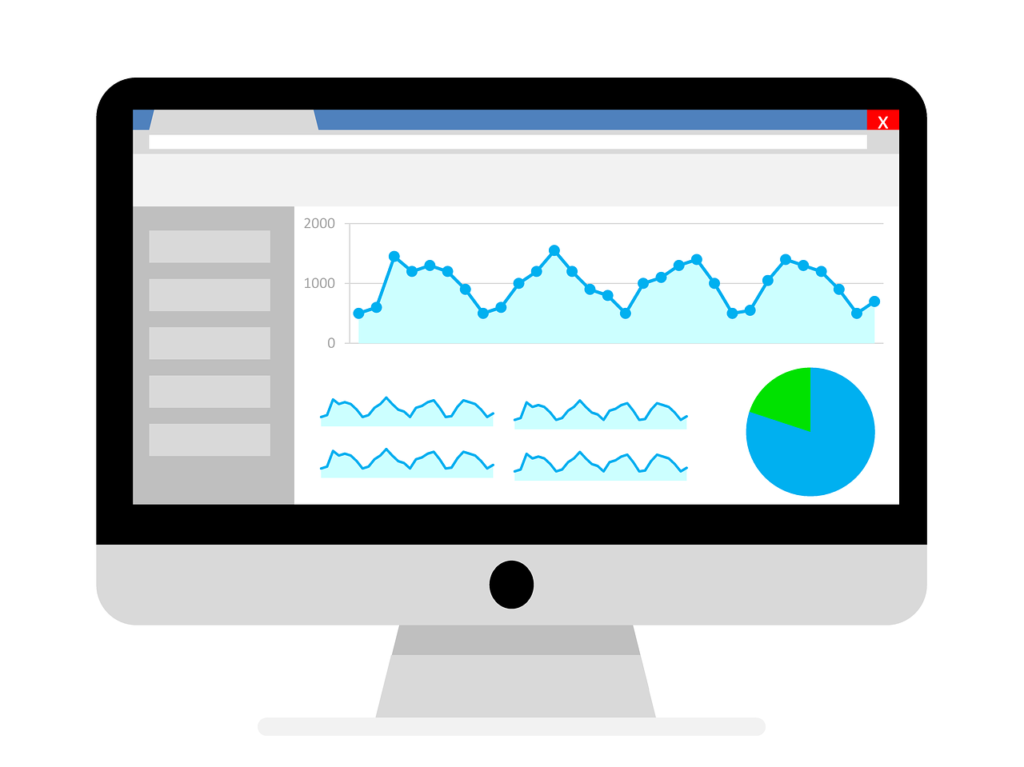Have you ever found yourself puzzled by the intricate dance between government agencies and the laws they enforce? If so, you’re not alone. One concept that often comes up in discussions about administrative law is Cheron deference. This legal doctrine plays a crucial role in how courts interpret the actions of federal agencies, and understanding it can illuminate the broader relationship between law and governance. So, what exactly is Chevron deference, and why does it matter to you?
Cheron deference (doctrine)

Cheron deference is a principle that directs courts to defer to a federal agency’s interpretation of a statute that it administers, as long as that interpretation is reasonable. This doctrine emerged from the landmark Supreme Court case Cheron U.S.A., Inc. v. Natural Resources Defense Council, Inc. in 1984. The case involved the Environmental Protection Agency (EPA) and its interpretation of the Clean Air Act. The Court ruled that when a statute is ambiguous, and the agency tasked with enforcing it has provided a reasonable interpretation, courts should respect that interpretation.
But why is this important? Well, consider the complexity of modern regulations. Agencies like the EPA or the Federal Communications Commission (FCC) are staffed with experts who understand the nuances of their respective fields. By allowing these agencies to interpret the laws they enforce, Chevron deference acknowledges their expertise and promotes consistency in regulatory enforcement.
Background on Chevron deference
To truly grasp the significance of Chevron deference, let’s take a step back and explore its origins. The case that set the stage for this doctrine involved a dispute over the EPA’s regulations concerning air pollution. The agency had interpreted the Clean Air Act in a way that allowed for flexibility in how states could implement their plans to reduce air pollution. The Natural Resources Defense Council challenged this interpretation, arguing that it undermined the Act’s intent.
In a unanimous decision, the Supreme Court sided with the EPA, establishing a two-step framework that has since become the cornerstone of Chevron deference:
- Step One: Courts must determine whether the statute is ambiguous. If the law is clear, that interpretation prevails.
- Step Two: If the statute is ambiguous, courts must then decide whether the agency’s interpretation is reasonable. If it is, the court defers to the agency’s expertise.
This framework has been pivotal in shaping how courts interact with federal agencies. It recognizes that while judges are skilled in interpreting laws, they may not possess the specialized knowledge required to understand the complexities of every regulatory issue. By deferring to agencies, the legal system acknowledges the importance of expert insight in governance.
However, Chevron deference is not without its critics. Some argue that it grants too much power to federal agencies, potentially leading to overreach. Others believe it can stifle judicial review and accountability. As you can see, this doctrine is a double-edged sword, balancing the need for expert interpretation with the principles of checks and balances in government.
In our ever-evolving legal landscape, understanding Chevron deference is essential. It not only affects how laws are interpreted but also shapes the regulatory environment that impacts our daily lives. Whether you’re a business owner navigating compliance or a citizen concerned about environmental regulations, the implications of Chevron deference are far-reaching and worth exploring further.
What is Chevron deference?
Have you ever wondered how courts decide whether to defer to an agency’s interpretation of a law? This is where Cheron deference comes into play. Named after the landmark Supreme Court case Chemical Manufacturers Association v. Natural Resources Defense Council in 1984, Chevron deference is a principle that instructs courts to defer to a federal agency’s interpretation of a statute that it administers, as long as that interpretation is reasonable. This doctrine acknowledges that agencies often possess specialized expertise and are better equipped to make informed decisions in their respective fields.
Imagine you’re trying to navigate a complex set of regulations regarding environmental protection. You might find it overwhelming, right? Now, picture an agency filled with experts who not only understand the intricacies of these regulations but also have the authority to interpret them. Chevron deference allows these agencies to take the lead, ensuring that their interpretations are given significant weight in legal disputes. This can be particularly important in areas like environmental law, where scientific knowledge and technical expertise are crucial.
Cheron doctrine’s two-step review
The Chevron doctrine operates through a two-step review process that courts follow when evaluating an agency’s interpretation of a statute. Let’s break it down:
- Step One: The court first asks whether the statute is clear on the issue at hand. If the language of the law is unambiguous and directly addresses the question, then that interpretation prevails. For instance, if a law explicitly states that a certain pollutant must not exceed a specific level, the agency cannot reinterpret that threshold.
- Step Two: If the statute is ambiguous, the court then considers whether the agency’s interpretation is reasonable. This is where the agency’s expertise comes into play. For example, if the Environmental Protection Agency (EPA) interprets a vague provision regarding air quality standards, the court will defer to the EPA’s interpretation as long as it is a plausible reading of the law.
This two-step process not only streamlines judicial review but also respects the role of agencies in crafting regulations that reflect their specialized knowledge. However, it’s worth noting that this deference has been a topic of debate, with some arguing that it gives too much power to agencies at the expense of judicial oversight.
Preliminary review: Chevron step zero
Before we even get to the two steps of Chevron deference, there’s an important preliminary review known as Cheron step zero. This step determines whether Chevron deference applies at all. Not all agency interpretations are entitled to this level of deference. For instance, if an agency issues a legal opinion that is not the result of formal rulemaking or adjudication, courts may decide that Chevron does not apply.
Consider a scenario where an agency provides informal guidance on a new regulation without going through the proper channels. In such cases, courts may opt for a more skeptical approach, questioning the legitimacy of the agency’s interpretation. This step is crucial because it ensures that only those interpretations that have undergone rigorous processes receive the benefit of Chevron deference.
In essence, Chevron step zero acts as a gatekeeper, ensuring that the agency’s interpretation is not only reasonable but also grounded in a legitimate process. This adds a layer of accountability and helps maintain a balance between agency authority and judicial review.
Chemron v. Natural Resources Defense Council
Imagine a world where the rules of the game are constantly shifting, where the very agencies meant to protect our environment and public health have the power to interpret laws in ways that can significantly impact our lives. This is the essence of the Chemron v. Natural Resources Defense Council case, a landmark decision that has shaped the landscape of administrative law since it was decided in 1984. At its core, this case established what we now refer to as Chemron deference, a principle that allows federal agencies to interpret ambiguous statutes within their jurisdiction, provided their interpretations are reasonable.
The case arose when the Natural Resources Defense Council (NRDC) challenged the Environmental Protection Agency’s (EPA) interpretation of the Clean Air Act. The EPA had created a regulatory framework that allowed for the “bubble concept,” which permitted companies to treat their entire facility as a single source of emissions rather than evaluating each individual source. The NRDC argued that this interpretation undermined the Act’s intent to reduce air pollution. However, the Supreme Court ultimately sided with the EPA, asserting that the agency’s interpretation was reasonable and thus deserving of deference.
This ruling was not just a win for the EPA; it set a precedent that has influenced countless cases since. The idea that agencies could wield such interpretive power sparked debates about accountability, expertise, and the balance of power between the legislative and executive branches. As we navigate the complexities of modern governance, understanding the implications of Chevron deference becomes increasingly vital.
U.S. Supreme Court opinion in Chevron
The Supreme Court’s opinion in Chevron was a pivotal moment in administrative law. Justice John Paul Stevens, writing for the majority, articulated a two-step framework that has become the cornerstone of Chevron deference. First, the Court asked whether the statute in question was ambiguous. If it was, the second step required the Court to determine whether the agency’s interpretation was reasonable.
This framework has been both praised and criticized. Supporters argue that it allows agencies, which often possess specialized knowledge and expertise, to make informed decisions that reflect the complexities of the issues they regulate. For instance, in environmental regulation, agencies like the EPA are equipped with scientific data and research that lawmakers may not fully grasp. On the other hand, critics contend that Chevron deference can lead to unchecked agency power, allowing bureaucrats to make sweeping decisions without sufficient oversight from Congress or the courts.
As we reflect on this decision, it’s essential to consider its real-world implications. For example, when the EPA decides to regulate greenhouse gas emissions, its interpretation of the Clean Air Act can have far-reaching effects on climate policy and industry practices. This is where the balance of power becomes crucial—how do we ensure that agencies act in the public interest while still allowing them the flexibility to adapt to new challenges?
Changing views on Chevron leading up to Loper Bright
Fast forward to today, and the conversation around Chevron deference is evolving. With the recent case of Loper Bright Enterprises v. Raimondo, we see a potential shift in how courts may approach agency interpretations. This case, which involves the National Marine Fisheries Service’s regulations on fishing quotas, has reignited debates about the limits of Chevron deference.
As we delve into this case, it’s important to recognize that public sentiment is shifting. Many people are beginning to question whether agencies should have the final say in interpreting laws that significantly affect our lives. The Loper Bright case has brought to light concerns about transparency and accountability in agency decision-making. For instance, if an agency’s interpretation leads to stricter fishing quotas, how do we ensure that those decisions are made with the best available science and in the interest of all stakeholders, including local fishermen and environmental advocates?
Experts are divided on the future of Chevron deference. Some believe that the Supreme Court may be poised to limit its application, while others argue that it remains a necessary tool for effective governance. As we navigate these changes, it’s crucial to stay informed and engaged. After all, the decisions made in cases like Loper Bright will shape the regulatory landscape for years to come, impacting everything from environmental policy to economic stability.
In conclusion, understanding Chevron deference is not just an academic exercise; it’s about recognizing how the interplay between law, regulation, and public interest affects our daily lives. As we continue to witness changes in judicial perspectives, it’s essential to remain vigilant and advocate for a balance that serves both the public and the environment.
Opposition to Chevron under the Trump administration
During the Trump administration, the concept of Chevron deference faced significant scrutiny and opposition. This legal doctrine, which mandates that courts defer to agency interpretations of ambiguous statutes, was increasingly viewed as a hindrance to regulatory reform. Critics argued that Chevron allowed federal agencies to wield excessive power, often leading to overreach in regulatory practices. The administration’s stance was clear: it sought to limit the influence of administrative agencies, advocating for a more restrained approach to governance.
One of the most vocal proponents of this opposition was then-Attorney General Jeff Sessions, who emphasized the need for a more accountable government. He argued that Chevron deference undermined the rule of law by allowing unelected bureaucrats to make significant policy decisions without proper oversight. This sentiment resonated with many who felt that the administrative state had grown too powerful, often at the expense of individual liberties and state authority.
As a result, the Trump administration took steps to curtail Chevron deference, signaling a shift in how courts might interpret agency actions in the future. This was not just a legal battle; it was a philosophical one, questioning the balance of power between the branches of government and the role of agencies in shaping public policy.
Loper Bright Enterprises v. Raimondo
Fast forward to 2022, and we find ourselves at a pivotal moment in the ongoing debate over Chevron deference with the case of Loper Bright Enterprises v. Raimondo. This case brought to the forefront the tensions between regulatory authority and the fishing industry, illustrating the real-world implications of Chevron’s application.
The crux of the case revolved around a regulation that required fishing vessels to pay for the services of monitors who would observe their operations to ensure compliance with federal laws. Loper Bright Enterprises, a fishing company, challenged this regulation, arguing that it was not only burdensome but also exceeded the authority granted to the National Oceanic and Atmospheric Administration (NOAA).
As the case unfolded, it became clear that the outcome could have far-reaching implications for Chevron deference. If the Supreme Court were to side with Loper Bright, it could signal a significant shift away from the traditional deference courts have shown to agency interpretations. This would not only affect the fishing industry but could also set a precedent for how courts handle agency regulations across various sectors.
U.S. Supreme Court opinion
The U.S. Supreme Court’s opinion in Loper Bright Enterprises v. Raimondo was eagerly anticipated, as it had the potential to reshape the landscape of administrative law. In a narrow decision, the Court ultimately ruled in favor of Loper Bright, stating that the regulation imposed by NOAA was indeed beyond the scope of the agency’s authority. This ruling sent shockwaves through the legal community and beyond, as it marked a significant departure from the established practice of Chevron deference.
Justice Neil Gorsuch, writing for the majority, emphasized the importance of limiting agency power and restoring the balance of authority between the legislative and executive branches. He argued that the decision was not merely about the fishing industry but about the fundamental principles of governance and accountability. This perspective resonated with many who have long felt that agencies should not have the final say in interpreting laws that affect the lives of everyday citizens.
As we reflect on the implications of this ruling, it’s essential to consider how it might influence future regulatory actions. Will agencies become more cautious in their interpretations, or will they seek to adapt to this new legal landscape? The answers to these questions will shape not only the regulatory environment but also the relationship between the government and the governed.
Dissenting opinion
When we think about the legal landscape in the United States, it’s easy to get lost in the complexities of court decisions and the nuances of judicial philosophy. One of the most significant aspects of this landscape is the concept of Chevron deference, which has been a cornerstone of administrative law for decades. However, not everyone agrees with its application, and dissenting opinions often provide a fascinating glimpse into the alternative viewpoints that shape our legal system.
Take, for instance, the dissenting opinion in the case of United States v. Mead Corp. (2001). In this case, Justice Antonin Scalia argued against the majority’s decision to grant Chevron deference to an agency’s interpretation of a statute. He believed that such deference undermined the judiciary’s role in interpreting the law, suggesting that it could lead to an unchecked expansion of executive power. Scalia’s dissent highlights a critical tension in administrative law: the balance between respecting agency expertise and maintaining judicial oversight.
Similarly, in the more recent case of Kisor v. Wilkie (2019), Justice Neil Gorsuch expressed his concerns about Chevron deference, suggesting that it could lead to a “dangerous” precedent where agencies could wield excessive power without sufficient checks. His dissenting opinion resonates with many who fear that Chevron deference may erode the rule of law by allowing agencies to interpret statutes in ways that may not align with legislative intent.
These dissenting opinions remind us that the conversation around Chevron deference is far from settled. They invite us to consider the implications of granting agencies broad interpretive authority and challenge us to think critically about the role of the judiciary in our democracy.
Aftermath of Loper Bright v. Raimondo
The recent Supreme Court case Loper Bright Enterprises v. Raimondo has reignited the debate surrounding Chevron deference, particularly in the context of regulatory authority over the fishing industry. In this case, the Court was faced with the question of whether the National Marine Fisheries Service (NMFS) could require fishing vessels to pay for observers to monitor their compliance with regulations. The decision, which ultimately favored the NMFS, has significant implications for how courts will approach Chevron deference moving forward.
In the aftermath of this ruling, many legal scholars and practitioners are pondering what this means for future cases. The Court’s decision to uphold the NMFS’s authority suggests a continued reliance on Chevron deference, but it also raises questions about the limits of that deference. For instance, will courts continue to defer to agency interpretations that may seem overly burdensome or economically detrimental to industries? This is a critical question for businesses and regulatory agencies alike.
Moreover, the ruling has sparked discussions about the broader implications for administrative law. Some experts argue that the decision could embolden agencies to impose more stringent regulations, knowing that courts are likely to defer to their expertise. Others worry that this could lead to a regulatory environment that stifles innovation and economic growth, particularly in industries that are already heavily regulated.
Aftermath in the courts
As we look at the aftermath of Loper Bright v. Raimondo, it’s essential to consider how lower courts are responding to the Supreme Court’s decision. The ruling has set a precedent that may influence how judges interpret agency regulations in future cases. For instance, we might see an uptick in cases where courts are more willing to defer to agency interpretations, particularly in areas where agencies have demonstrated expertise.
However, this does not mean that all courts will uniformly apply Chevron deference. Some judges may take a more skeptical view, especially in cases where they perceive that an agency’s interpretation could lead to significant economic consequences or infringe on individual rights. This divergence in judicial philosophy can create a patchwork of interpretations across different jurisdictions, leading to uncertainty for both agencies and the industries they regulate.
In essence, the aftermath of Loper Bright v. Raimondo serves as a reminder of the dynamic nature of administrative law. As courts grapple with the implications of Chevron deference, we are witnessing a critical moment in the ongoing dialogue about the balance of power between agencies and the judiciary. It’s a conversation that affects not just legal scholars and practitioners, but all of us who navigate the complexities of regulations in our daily lives.
Legislative responses
As we navigate the intricate landscape of administrative law, one question often arises: how should Congress respond to the implications of Chevron deference? This legal doctrine, which compels courts to defer to agency interpretations of ambiguous statutes, has sparked a lively debate among lawmakers. Some argue that Chevron deference undermines legislative intent, while others believe it is essential for effective governance.
In recent years, we’ve seen a variety of legislative responses aimed at either reinforcing or curtailing Chevron deference. For instance, the Regulatory Accountability Act, introduced in various forms, seeks to limit the scope of Chevron by requiring agencies to provide clearer justifications for their interpretations. Proponents of this act argue that it would enhance transparency and accountability, ensuring that agencies do not overreach their authority.
On the flip side, some legislators advocate for maintaining Chevron deference, emphasizing its role in allowing agencies, which often possess specialized expertise, to make informed decisions. They argue that stripping away this deference could lead to a chaotic regulatory environment, where courts, lacking the same level of expertise, make decisions that could disrupt essential services and protections.
Ultimately, the legislative responses to Chevron deference reflect a broader struggle over the balance of power between Congress, the judiciary, and administrative agencies. As you consider these perspectives, think about how they might impact the everyday lives of citizens. Would a more stringent approach to Chevron deference lead to better governance, or could it create more confusion and inefficiency?
Applications of Loper Bright v. Raimondo
The recent case of Loper Bright v. Raimondo has reignited discussions surrounding Chevron deference, particularly in the context of environmental regulations. This case involved a challenge to the National Marine Fisheries Service’s (NMFS) interpretation of the Magnuson-Stevens Act, which governs fishery management. The NMFS had implemented regulations that required fishing vessels to carry observers to monitor compliance with conservation measures.
In this instance, the court’s application of Chevron deference was pivotal. The judges had to determine whether the NMFS’s interpretation of the statute was reasonable. The ruling ultimately upheld the agency’s authority, illustrating how Chevron deference can empower regulatory bodies to enforce complex environmental protections. This decision is particularly significant given the ongoing challenges posed by climate change and overfishing.
As you reflect on this case, consider the implications for both the fishing industry and environmental conservation. The balance between economic interests and ecological sustainability is delicate, and the application of Chevron deference in this context highlights the critical role that agencies play in navigating these challenges. How do you feel about the courts deferring to agency expertise in such significant matters?
Arguments about Chevron deference
The debate surrounding Chevron deference is rich and multifaceted, with compelling arguments on both sides. Advocates for Chevron argue that it is essential for effective governance. They point out that agencies are often staffed with experts who understand the nuances of the laws they enforce. For example, in the realm of public health, agencies like the Centers for Disease Control and Prevention (CDC) rely on scientific data and research to make informed decisions that protect public welfare. Without Chevron deference, courts might second-guess these expert decisions, potentially undermining public health initiatives.
Conversely, critics of Chevron deference argue that it can lead to an erosion of accountability. They contend that when courts defer to agency interpretations, it can result in unchecked regulatory power. This concern is particularly relevant in cases where agencies may have conflicting interests or where their interpretations may not align with the original intent of the legislation. For instance, in the context of labor regulations, some argue that overly broad interpretations can stifle economic growth and innovation.
As you ponder these arguments, think about your own experiences with government regulations. Have you ever felt that an agency’s decision was out of touch with the needs of the community it serves? Or do you believe that expert agencies should have the final say in complex matters? The conversation around Chevron deference is not just a legal debate; it’s a discussion about how we want our government to function and serve its citizens.
Arguments in support of Chevron deference
Have you ever found yourself in a situation where you had to rely on someone else’s expertise? Perhaps you sought advice from a mechanic about your car or consulted a doctor regarding a health issue. In many ways, this is the essence of Chevron deference, a legal principle that encourages courts to defer to the expertise of administrative agencies when interpreting ambiguous statutes. This approach has sparked considerable debate, but there are compelling arguments in its favor.
Chemical deference allows agencies to operate efficiently
One of the strongest arguments for Chevron deference is that it enables government agencies to function more efficiently. Imagine a world where every regulatory decision made by an agency had to be scrutinized and approved by the courts. The backlog of cases would be overwhelming, and critical regulations could be delayed indefinitely. According to a study by the Administrative Conference of the United States, Chevron deference helps streamline the regulatory process, allowing agencies to implement rules that protect public health and safety without unnecessary judicial interference.
For instance, consider the Environmental Protection Agency (EPA). When the EPA interprets the Clean Air Act to set air quality standards, it relies on scientific data and expert analysis. If courts were to second-guess every interpretation, the agency would struggle to respond to environmental crises in a timely manner. By granting deference, we allow the EPA to act swiftly and effectively, ensuring that our air remains clean and safe.
Judges should defer to agencies for subject matter expertise
Another key argument in support of Chevron deference is the recognition that administrative agencies often possess specialized knowledge that judges simply do not. Think about it: judges are trained in law, not necessarily in the intricate details of environmental science, public health, or telecommunications. When an agency like the Federal Communications Commission (FCC) makes decisions about telecommunications regulations, it draws on years of research, data analysis, and industry expertise. Shouldn’t we trust their judgment in these matters?
Legal scholars, such as Professor Lisa B. Bressman from Vanderbilt Law School, argue that this deference is not just a matter of convenience; it acknowledges the reality that agencies are often better equipped to make informed decisions in their respective fields. In her research, she highlights how this deference allows for a more nuanced understanding of complex issues, ultimately leading to better policy outcomes.
Moreover, when courts defer to agency expertise, it fosters a collaborative relationship between the judiciary and the executive branch. This partnership can lead to more informed and effective governance, as agencies can adapt their regulations based on real-world feedback and judicial interpretations.
Courts should defer to an agency’s interpretation when Congress has expressly delegated authority to it
Imagine you’re at a family gathering, and your uncle, who’s a seasoned chef, is asked to explain the secret to his famous chili recipe. You trust his expertise because he’s been cooking for decades, and you know he’s familiar with the nuances of flavor and technique. This is somewhat akin to how courts approach Chevron deference. When Congress delegates authority to an agency, it’s like saying, “We trust you to know best about this area.”
Chemical safety, environmental regulations, and labor laws are just a few examples where Congress has empowered agencies like the Environmental Protection Agency (EPA) or the Occupational Safety and Health Administration (OSHA) to interpret and enforce regulations. The Chevron doctrine, established in the 1984 Supreme Court case Chevron U.S.A., Inc. v. Natural Resources Defense Council, Inc., essentially states that if a law is ambiguous, courts should defer to the agency’s interpretation as long as it is reasonable.
This deference is crucial because agencies often have specialized knowledge and experience that courts lack. For instance, the EPA’s interpretation of what constitutes a “navigable water” under the Clean Water Act has evolved over time, reflecting new scientific understandings and environmental challenges. By allowing the EPA to interpret this term, courts enable a more informed and adaptive regulatory approach.
Experts argue that this deference fosters consistency and stability in regulatory environments, which is essential for businesses and the public alike. According to a study by the Administrative Conference of the United States, agencies that operate under Chevron deference are more likely to engage in thorough rule-making processes, leading to better-informed policies.
Arguments in opposition to Chevron deference
While Chevron deference has its advocates, it’s not without its critics. Some argue that this practice can lead to an overreach of agency power, undermining the role of Congress and the judiciary. Think of it like a game of telephone: if the original message gets distorted as it passes through various interpretations, the final outcome may stray far from what Congress intended.
Critics often point to the potential for agencies to exploit their interpretive authority, leading to regulations that may not align with legislative intent. For example, the expansion of the definition of “waters of the United States” by the EPA has faced significant backlash, with opponents claiming it overreaches federal jurisdiction into areas traditionally managed by states.
Moreover, some legal scholars argue that Chevron deference can create a lack of accountability. If agencies know their interpretations will be upheld by courts, they may feel less pressure to justify their decisions or engage with public concerns. This can lead to a disconnect between regulatory actions and the needs of the communities they serve.
In a 2019 article in the Harvard Law Review, legal experts highlighted that the increasing reliance on Chevron deference could erode the checks and balances that are fundamental to our democratic system. They argue that courts should take a more active role in scrutinizing agency interpretations to ensure they align with the original legislative intent.
Deference to federal agencies infringes on the separation of powers
At the heart of the debate surrounding Chevron deference is the principle of separation of powers. This foundational concept ensures that no single branch of government becomes too powerful. When courts defer to agency interpretations, some argue that it blurs the lines between legislative and executive authority.
Consider this: if Congress passes a law but then allows an agency to interpret it broadly, it raises the question of whether Congress is effectively abdicating its responsibility. Critics contend that this can lead to a scenario where unelected officials wield significant power over public policy, which should ideally be determined by elected representatives.
For instance, the controversy surrounding the Deferred Action for Childhood Arrivals (DACA) program illustrates this tension. The program, initiated by executive action, faced legal challenges arguing that it overstepped the bounds of executive authority. Critics claimed that by allowing an agency to create such a significant policy without explicit congressional approval, we risk undermining the legislative process.
Legal scholars like Professor Adrian Vermeule from Harvard Law School argue that while agencies need some level of discretion to function effectively, unchecked deference can lead to a concentration of power that is antithetical to democratic governance. They advocate for a more balanced approach, where courts actively engage in reviewing agency interpretations to uphold the integrity of the separation of powers.
In conclusion, while Chevron deference serves a purpose in allowing agencies to utilize their expertise, it also raises important questions about accountability, legislative intent, and the balance of power within our government. As we navigate these complex issues, it’s essential to consider both the benefits and the potential pitfalls of this legal doctrine.
Deference to agency interpretations undermines judicial authority
Imagine a world where the rules of the game change depending on who’s in charge. This is the reality many face when it comes to Chevron deference, a legal principle that allows federal agencies to interpret ambiguous laws. While this might sound efficient at first glance, it raises significant concerns about the balance of power between the judiciary and the executive branches of government.
When courts defer to agency interpretations, they often sidestep their role as interpreters of the law. This can lead to a situation where agencies wield more power than Congress intended, effectively allowing them to create laws through interpretation rather than through the legislative process. Legal scholars like Professor Jonathan Adler have argued that this undermines the judiciary’s authority, as it diminishes the courts’ role in checking executive power. In a democracy, we expect our laws to be clear and our courts to uphold them, but Chevron deference can blur those lines.
Consider the case of United States v. Mead Corp., where the Supreme Court ruled that the Customs Service’s interpretation of a tariff statute was entitled to deference. Critics argue that this decision set a precedent for agencies to claim authority over complex legal interpretations, which can lead to inconsistent applications of the law. When courts defer to agencies, they risk allowing those agencies to operate without sufficient oversight, which can have far-reaching implications for individual rights and liberties.
Agency interpretations vary by administration, which creates regulatory instability
Have you ever felt the frustration of trying to keep up with changing rules? This is a common experience for businesses and individuals alike when it comes to regulatory frameworks shaped by Chevron deference. The reality is that agency interpretations can shift dramatically with each new administration, leading to a landscape of regulatory instability.
For instance, consider environmental regulations. Under the Obama administration, the Environmental Protection Agency (EPA) took a strong stance on climate change, implementing stringent regulations on emissions. However, with the transition to the Trump administration, many of these interpretations were rolled back, leading to a complete overhaul of the regulatory framework. This back-and-forth can leave businesses in a lurch, unsure of how to comply with laws that seem to change with the political winds.
According to a study by the American Action Forum, the regulatory changes between administrations can cost businesses billions in compliance costs. This instability not only affects large corporations but also small businesses and everyday citizens who rely on consistent regulations to plan their futures. The unpredictability can stifle innovation and investment, as companies hesitate to commit resources when they are unsure of the regulatory environment.
Chemron and the states
Now, let’s zoom in on how Chevron deference impacts states. States often find themselves at odds with federal agencies, especially when it comes to interpreting laws that affect local governance. The principle of Chevron deference can complicate this relationship, as states may feel their authority is undermined by federal interpretations.
Take, for example, the ongoing debates over healthcare regulations. States like California have pursued ambitious healthcare reforms, only to face challenges from federal agencies interpreting laws in ways that conflict with state initiatives. This tug-of-war can create a patchwork of regulations that vary widely from state to state, leading to confusion and frustration for residents and businesses alike.
Moreover, the National Federation of Independent Business has highlighted how Chevron deference can lead to a lack of accountability for federal agencies. When states challenge federal interpretations in court, they often find themselves up against a formidable opponent, as agencies can wield significant resources and legal expertise. This dynamic can discourage states from pursuing their own regulatory agendas, ultimately limiting their ability to address local issues effectively.
In conclusion, while Chevron deference may have been designed to streamline governance, it raises critical questions about judicial authority, regulatory stability, and state autonomy. As we navigate these complex waters, it’s essential to consider the implications of allowing agencies to interpret laws without sufficient checks and balances. After all, in a democracy, clarity and accountability should be our guiding principles.
State legislation related to judicial review and deference
Have you ever wondered how state laws interact with judicial review and the concept of deference? It’s a fascinating area that can significantly impact how laws are interpreted and enforced. In the context of Chevron deference, which primarily applies to federal agencies, states have their own unique approaches to judicial review that can either align with or diverge from federal standards.
Many states have enacted legislation that explicitly outlines how courts should treat agency interpretations of state laws. For instance, some states adopt a version of Chevron deference, while others may impose stricter standards for judicial review. This can lead to a patchwork of legal standards across the country, which can be confusing for both agencies and the public.
Take, for example, the state of California. California courts have historically applied a form of deference to administrative agencies, but the specifics can vary based on the context. In the case of California v. Environmental Protection Agency, the court emphasized the need for agencies to provide a clear rationale for their interpretations, reflecting a more nuanced approach to deference. This illustrates how state legislation can shape the judicial landscape, often in ways that reflect local values and priorities.
Moreover, states like Texas have taken a different route, where the courts are more inclined to scrutinize agency actions closely. This divergence can lead to significant differences in how laws are applied, affecting everything from environmental regulations to labor laws. Understanding these variations is crucial for anyone navigating the legal landscape, whether you’re a law student, a practicing attorney, or simply a curious citizen.
Other types of deference
While Chevron deference is perhaps the most well-known, it’s not the only type of deference that exists in the legal realm. Have you ever heard of Auer deference? This principle applies to an agency’s interpretation of its own regulations. It’s similar to Chevron but focuses on the agency’s expertise in its specific regulatory area. For instance, if the Department of Labor issues a guideline interpreting a labor regulation, courts may defer to that interpretation unless it is deemed unreasonable.
Another type is Skidmore deference, which is a more flexible standard. Under Skidmore, courts may give weight to an agency’s interpretation based on its persuasiveness and the thoroughness of its reasoning, rather than a strict adherence to the Chevron framework. This can be particularly relevant in cases where an agency has not formally adopted a rule but has provided guidance or opinions that courts find compelling.
These various forms of deference highlight the intricate dance between judicial authority and agency expertise. It raises an important question: how much trust should we place in agencies to interpret laws? This is a topic of ongoing debate among legal scholars and practitioners, as the balance between deference and judicial oversight continues to evolve.
Noteworthy events
In recent years, several noteworthy events have brought Chevron deference back into the spotlight. One such event was the Supreme Court case United States v. Mead Corp. in 2001, which clarified the circumstances under which Chevron deference applies. The Court ruled that Chevron deference is not automatic; it depends on whether the agency is acting with the authority of Congress. This decision has had lasting implications on how courts approach agency interpretations.
Fast forward to 2020, when the Supreme Court heard Department of Homeland Security v. Regents of the University of California. This case involved the Deferred Action for Childhood Arrivals (DACA) program and raised questions about whether the agency’s decision to rescind the program was entitled to Chevron deference. The Court ultimately ruled against the agency, emphasizing that the decision was arbitrary and capricious, which sparked discussions about the limits of deference in the face of agency action.
These events not only shape the legal landscape but also reflect broader societal concerns about the role of government agencies in our lives. As we navigate these complex waters, it’s essential to stay informed and engaged. After all, the implications of Chevron deference and its counterparts can affect everything from environmental policy to immigration law, touching the lives of countless individuals.
Senator Warren introduces bill to codify Chevron (2024)
Imagine a world where the balance of power between federal agencies and the courts is clearly defined, where the rules of engagement are set in stone. In 2024, Senator Elizabeth Warren took a bold step in that direction by introducing a bill aimed at codifying Chevron deference. This legislative move is not just a political maneuver; it’s a response to the growing concerns about the role of administrative agencies in interpreting laws. But what does this mean for you and me?
Chevron deference, established by the Supreme Court in 1984, allows courts to defer to an agency’s interpretation of a statute it administers, as long as that interpretation is reasonable. Senator Warren’s bill seeks to solidify this principle, ensuring that agencies have the authority to implement regulations without constant judicial second-guessing. This is particularly important in areas like environmental protection and public health, where expert agencies often have the most relevant knowledge.
Warren argues that by codifying Chevron, we can protect the integrity of regulatory frameworks that safeguard our communities. In her words, “We need to ensure that our agencies can effectively enforce the laws that protect our air, water, and health.” This sentiment resonates with many who feel that a strong regulatory environment is essential for public welfare.
However, the bill has sparked debate. Critics argue that codifying Chevron could lead to unchecked agency power, potentially undermining accountability. They worry that it might create a scenario where agencies can interpret laws in ways that serve their interests rather than the public good. As we navigate this complex issue, it’s crucial to consider both sides and reflect on how these changes might impact our daily lives.
SCOTUS overturns Chevron deference (2024)
Fast forward to 2024, and the landscape of administrative law shifted dramatically when the Supreme Court of the United States (SCOTUS) made the unprecedented decision to overturn Chevron deference. This ruling sent shockwaves through the legal and regulatory communities, leaving many to wonder: what does this mean for the future of federal regulation?
The Court’s decision was rooted in a growing skepticism about the expansive power of federal agencies. In a 6-3 ruling, the justices argued that the original intent of Congress should take precedence over agency interpretations. Justice Amy Coney Barrett, writing for the majority, emphasized that “the judiciary must ensure that the law is applied as Congress intended, not as agencies wish.” This ruling has significant implications for how laws are interpreted and enforced.
For everyday citizens, this could mean a more challenging regulatory environment. Without Chevron deference, agencies may find it harder to implement regulations, leading to potential delays in critical areas like environmental protection and public health. Imagine a scenario where new regulations aimed at combating climate change face legal hurdles at every turn, slowing down progress and leaving communities vulnerable.
On the flip side, proponents of the ruling argue that it restores accountability and transparency in government. They believe that by limiting agency power, we can ensure that elected representatives, rather than unelected bureaucrats, make the rules that govern our lives. This debate is far from over, and as we reflect on this monumental decision, it’s essential to consider how it will shape the regulatory landscape for years to come.
SCOTUS hears oral argument in challenge to Chevron deference (2023)
In 2023, the Supreme Court heard oral arguments in a case that would challenge the very foundation of Chevron deference. As the justices sat in their chambers, the air was thick with anticipation. This case was not just about legal principles; it was about the future of how laws are interpreted and enforced in our country.
During the proceedings, attorneys for both sides presented compelling arguments. The challengers of Chevron deference argued that it has led to an overreach of agency power, allowing bureaucrats to make decisions that should be left to Congress. They painted a picture of a regulatory landscape where agencies operate with little oversight, potentially harming businesses and stifling innovation.
On the other hand, advocates for maintaining Chevron deference highlighted the importance of agency expertise. They argued that agencies like the Environmental Protection Agency (EPA) and the Food and Drug Administration (FDA) are staffed with professionals who understand the complexities of their respective fields. Without deference, these agencies could struggle to implement necessary regulations effectively.
As the justices deliberated, many observers reflected on the broader implications of this case. What would it mean for public health if agencies could no longer act swiftly in response to emerging threats? How would businesses navigate a more uncertain regulatory environment? These questions lingered in the minds of many, reminding us that the outcome of this case could have real-world consequences for all of us.
SCOTUS takes up second Chevron case (2023)
Imagine a world where the rules governing our lives can shift based on the interpretation of a few words in a legal document. This is the reality of Chevron deference, a principle that has sparked intense debate in legal circles and beyond. In 2023, the Supreme Court of the United States (SCOTUS) took on a second case related to this doctrine, reigniting discussions about the balance of power between federal agencies and the courts. But what does this mean for you and me?
The case, which centers around the Environmental Protection Agency (EPA), challenges the agency’s authority to interpret regulations concerning air quality standards. As we navigate the complexities of environmental policy, it’s crucial to understand how Chevron deference allows agencies to make decisions that can significantly impact our health and environment. The principle essentially states that if a law is ambiguous, courts should defer to the agency’s interpretation as long as it is reasonable.
Legal experts argue that this deference is essential for effective governance. Professor Lisa Sorensen, a noted legal scholar, emphasizes that “agencies are staffed with experts who understand the nuances of their fields better than judges.” However, critics worry that this can lead to unchecked power, allowing agencies to overreach their authority. The outcome of this case could redefine the limits of agency power and influence how regulations are crafted and enforced in the future.
SCOTUS to hear case challenging Chevron deference (2023)
As we delve deeper into the implications of Chevron deference, another significant case has emerged on the SCOTUS docket in 2023, challenging the very foundation of this legal doctrine. This case has the potential to reshape the landscape of administrative law and how we interact with government regulations. But why should you care?
At its core, this case questions whether courts should continue to defer to agency interpretations of ambiguous statutes. The plaintiffs argue that such deference undermines the judiciary’s role and can lead to arbitrary decision-making by agencies. For instance, consider a situation where the Department of Labor interprets labor laws in a way that significantly impacts workers’ rights. If courts automatically defer to this interpretation, it could result in policies that do not reflect the intent of the law or the needs of the people.
Experts like former Solicitor General Donald Verrilli argue that “the judiciary must maintain its role as a check on executive power.” The outcome of this case could either reinforce or dismantle the Chevron framework, affecting everything from environmental regulations to labor laws. As we await the Court’s decision, it’s essential to reflect on how these legal principles affect our daily lives and the governance of our society.
Fifth Circuit declines to apply Chevron deference in bump stock ruling (2023)
In a striking move in 2023, the Fifth Circuit Court of Appeals made headlines by declining to apply Chevron deference in a ruling concerning bump stocks, devices that allow semi-automatic firearms to fire more rapidly. This decision not only highlights the ongoing debate surrounding Chevron deference but also illustrates its real-world implications on public safety and regulatory authority.
The court’s ruling came in response to a challenge against the Bureau of Alcohol, Tobacco, Firearms and Explosives (ATF), which had classified bump stocks as machine guns under federal law. By refusing to defer to the ATF’s interpretation, the Fifth Circuit emphasized the importance of judicial oversight in matters that significantly affect citizens’ rights and safety. This decision has sparked a flurry of reactions, with some praising the court for standing up against what they see as overreach by federal agencies.
Legal analysts note that this ruling could set a precedent for how courts handle similar cases in the future. As attorney Sarah Thompson points out, “This case illustrates a growing skepticism towards agency interpretations, especially in areas where public safety is at stake.” The implications of this decision extend beyond firearms regulation; it raises questions about how much power we are willing to grant to federal agencies and the importance of judicial review in maintaining a balance of power.
SCOTUS considers Chevron deference in Medicare challenge (2021-2022)
Imagine you’re navigating a complex maze, where every turn could lead you to a different outcome. This is often how legal experts and policymakers feel when discussing Chevron deference, especially in the context of significant cases like the Medicare challenge that the Supreme Court of the United States (SCOTUS) considered between 2021 and 2022. Chevron deference is a legal principle that compels courts to defer to a government agency’s interpretation of a statute that it administers, as long as that interpretation is reasonable. This principle has profound implications for how laws are interpreted and enforced, particularly in the realm of healthcare.
During this period, the Supreme Court was faced with a case that could potentially reshape the landscape of administrative law. The challenge revolved around the Department of Health and Human Services (HHS) and its authority to interpret Medicare regulations. As we delve into the details, it’s essential to understand that the stakes were high—not just for the agencies involved, but for millions of Americans relying on Medicare services.
June 2022: SCOTUS finds HHS violated statutory authority, declines to weigh in on Chevron deference
Fast forward to June 2022, when the Supreme Court delivered a pivotal ruling. In a case that many had anticipated would clarify the future of Chevron deference, the Court ultimately sidestepped the issue. Instead, it found that the HHS had overstepped its statutory authority in its interpretation of Medicare reimbursement rates. This decision was significant because it underscored the limits of agency power, even as it left the broader question of Chevron deference unresolved.
Legal experts were left pondering the implications of this ruling. Some argued that by not addressing Chevron deference directly, the Court missed an opportunity to provide much-needed clarity. Others felt that the decision reinforced the idea that agencies must operate within the bounds of their statutory authority, a sentiment echoed by Justice Neil Gorsuch, who has been a vocal critic of Chevron deference. He suggested that the principle often leads to a lack of accountability and transparency in government decision-making.
November 2021: SCOTUS hears oral argument in case that could limit Chevron deference
Before the June ruling, in November 2021, the Supreme Court heard oral arguments in a case that had the potential to limit Chevron deference significantly. The case revolved around whether the HHS’s interpretation of Medicare regulations was reasonable. As the justices listened to the arguments, it became clear that they were grappling with the balance between agency expertise and judicial oversight.
During the proceedings, the justices raised thought-provoking questions about the role of agencies in interpreting laws. For instance, Justice Samuel Alito pointed out the potential for agencies to wield excessive power if courts consistently defer to their interpretations. This concern resonates with many who worry about the implications of unchecked administrative authority. The discussions highlighted a critical tension: how do we ensure that agencies can effectively implement laws while also holding them accountable for their interpretations?
As we reflect on these developments, it’s essential to recognize that the conversation around Chevron deference is not just a legal debate; it’s a matter that affects real lives. The outcomes of these cases can influence healthcare access, the quality of services, and ultimately, the well-being of individuals who depend on programs like Medicare. So, as we continue to navigate this complex legal landscape, it’s worth asking ourselves: how do we strike the right balance between agency expertise and the need for accountability in our government? The answer may shape the future of administrative law for years to come.
Sixth Circuit considers applications of Chevron deference in criminal contexts (2021-2022)
Have you ever wondered how courts interpret laws when the language is ambiguous? This is where the concept of Chevron deference comes into play, particularly in the realm of administrative law. But what happens when this principle is applied to criminal contexts? The Sixth Circuit’s exploration of this issue between 2021 and 2022 offers a fascinating glimpse into the complexities of legal interpretation.
Chevron deference, originating from the landmark case Chemical Manufacturers Association v. Natural Resources Defense Council (1984), essentially holds that courts should defer to an agency’s interpretation of a statute it administers, as long as that interpretation is reasonable. This principle has been a cornerstone of administrative law, but its application in criminal cases raises significant questions about fairness and accountability.
In a notable case, the Sixth Circuit found itself grappling with whether to apply Chevron deference in a criminal context. The judges were divided, reflecting a broader debate within the legal community. Some argued that applying Chevron in criminal cases could undermine the rights of defendants, while others contended that agencies should be allowed to interpret their own regulations, even in criminal matters. This tension highlights the delicate balance between agency expertise and the protection of individual rights.
As we delve deeper into this topic, it’s essential to consider the implications of these judicial decisions. For instance, if courts routinely apply Chevron deference in criminal cases, could this lead to a scenario where agencies wield excessive power over individuals? Or, conversely, does it provide necessary clarity in an increasingly complex legal landscape? These questions are not just academic; they resonate with anyone who has ever felt the weight of the law.
October 2022: SCOTUS declines to hear case
Fast forward to October 2022, when the Supreme Court of the United States (SCOTUS) made a significant decision by declining to hear a case that could have clarified the application of Chevron deference in criminal contexts. This refusal to engage left many legal scholars and practitioners pondering the implications of the Sixth Circuit’s rulings. Why would the highest court choose to sidestep such a pivotal issue?
One possible reason is the Court’s desire to avoid entangling itself in the murky waters of administrative law as it pertains to criminal justice. By not taking up the case, SCOTUS allowed the lower court’s decision to stand, which may have been a strategic move to let the legal community grapple with these complex issues without the Court’s intervention. This decision reflects a broader trend where the Supreme Court is increasingly cautious about expanding its role in administrative matters, especially those that could have far-reaching consequences for individual rights.
For you, the reader, this raises an important question: how do we navigate a legal system that is sometimes reluctant to clarify its own principles? Understanding the nuances of Chevron deference and its implications in criminal law is crucial, especially as we consider the balance of power between agencies and individuals.
December 2021: Judges split on appropriateness of Chevron deference in criminal contexts following rehearing en banc
In December 2021, the Sixth Circuit’s decision to rehear a case en banc revealed a deep divide among judges regarding the appropriateness of Chevron deference in criminal contexts. This split decision is emblematic of a larger conversation about the role of judicial interpretation in the face of administrative authority. Some judges argued passionately for the necessity of Chevron deference, emphasizing the expertise of regulatory agencies in interpreting complex statutes. Others raised concerns about the potential for abuse of power, particularly in cases where individuals’ freedoms are at stake.
Consider the implications of this split: if judges cannot agree on the application of Chevron deference in criminal cases, what does that mean for defendants? It suggests a legal landscape fraught with uncertainty, where the interpretation of laws can vary dramatically depending on the court. This inconsistency can lead to unequal treatment under the law, which is a fundamental concern for anyone who values justice.
As we reflect on these developments, it’s essential to recognize that the conversation around Chevron deference is not just a legal debate; it’s a matter that affects real lives. The outcomes of these cases can determine the course of individuals’ futures, making it imperative for us to stay informed and engaged with these issues. How do you feel about the balance of power in our legal system? Are you comfortable with agencies having such authority, or do you believe it should be curtailed to protect individual rights?
March 2021: Sixth Circuit three-judge panel limits applications of Chevron deference in criminal contexts
In March 2021, a significant ruling emerged from the Sixth Circuit Court of Appeals that caught the attention of legal scholars and practitioners alike. The three-judge panel decided to limit the application of Chevron deference in criminal contexts, a move that stirred discussions about the boundaries of administrative authority and judicial oversight. But what does this mean for you and me, especially if we’re not legal experts?
To understand the implications, let’s first break down what Chevron deference is. Essentially, it’s a principle that directs courts to defer to a government agency’s interpretation of a statute that it administers, as long as that interpretation is reasonable. This doctrine has been a cornerstone of administrative law since the landmark case Chevron U.S.A., Inc. v. Natural Resources Defense Council, Inc. in 1984.
However, the Sixth Circuit’s ruling suggests a shift in how courts might approach cases involving criminal law. By limiting Chevron deference in these contexts, the court emphasized the importance of judicial scrutiny over agency interpretations that could lead to criminal liability. This decision resonates with many who are concerned about the potential for overreach by administrative agencies, especially when it comes to criminal enforcement.
For instance, consider a scenario where an agency interprets a vague statute in a way that could criminalize certain behaviors. If courts apply Chevron deference without question, individuals might find themselves facing severe penalties based on an agency’s interpretation rather than clear legislative intent. The Sixth Circuit’s ruling serves as a reminder that the judiciary plays a crucial role in safeguarding individual rights against potential administrative overreach.
As we navigate this evolving legal landscape, it’s essential to stay informed about how these changes might affect our rights and the balance of power between agencies and the courts.
The Supreme Court Ends Chevron Deference—What Now?

Imagine waking up one day to find that a long-standing legal principle that shaped the relationship between federal agencies and the courts has been overturned. This is the reality we face as discussions about the potential end of Chevron deference gain momentum in the Supreme Court. But what does this mean for the average citizen, and how will it reshape the legal landscape?
The Supreme Court’s potential decision to end Chevron deference could lead to a significant shift in how courts interpret agency regulations. Without this deference, courts would be more likely to scrutinize agency interpretations of laws, potentially leading to a more rigorous examination of regulatory actions. This could be a double-edged sword: while it may enhance judicial oversight and protect individual rights, it could also result in increased uncertainty for agencies trying to implement regulations.
For example, consider the Environmental Protection Agency (EPA) and its regulations on air quality. If Chevron deference is no longer in play, courts might challenge the EPA’s interpretations more frequently, leading to delays in implementing crucial environmental protections. This could have real-world implications for public health and safety, as regulatory actions may become bogged down in litigation.
Experts are divided on the potential outcomes of this shift. Some argue that it could lead to a more accountable government, while others warn of the chaos that could ensue as agencies navigate a more hostile judicial environment. As we ponder these possibilities, it’s essential to consider how this change might affect our daily lives, from the air we breathe to the regulations that govern our workplaces.
What is “Chevron deference,” and how does it work?
At its core, Chevron deference is a legal doctrine that embodies a fundamental principle of administrative law: agencies are often better equipped than courts to interpret the statutes they administer. This principle acknowledges that agencies possess specialized knowledge and expertise, allowing them to make informed decisions about complex regulatory issues.
To illustrate how Chevron deference works, let’s take a closer look at the Chevron case itself. In this landmark decision, the Supreme Court ruled that when a statute is ambiguous, courts should defer to an agency’s interpretation as long as it is reasonable. This means that if the Environmental Protection Agency, for instance, interprets a provision of the Clean Air Act in a way that makes sense, courts are generally expected to uphold that interpretation.
However, the application of Chevron deference is not without its critics. Some argue that it grants too much power to administrative agencies, potentially undermining the role of the judiciary. Others express concern that it can lead to inconsistent interpretations of laws, creating confusion for individuals and businesses trying to comply with regulations.
As we navigate this complex terrain, it’s crucial to recognize that Chevron deference is not just a legal concept; it has real implications for our lives. Whether it’s the air we breathe, the food we eat, or the safety regulations that protect us, the way agencies interpret laws can significantly impact our daily experiences. Understanding Chevron deference helps us appreciate the delicate balance between regulatory authority and judicial oversight, a balance that is constantly evolving in our legal system.
The case that overruled Chevron deference
Have you ever found yourself puzzled by a government regulation, wondering how it came to be? Or perhaps you’ve questioned the authority of federal agencies to interpret laws in ways that seem to stretch their original intent. This is where the concept of Chevron deference comes into play, a legal doctrine that has shaped administrative law for decades. But what happens when this doctrine is challenged? Let’s explore the case that overruled Chevron deference and what it means for the future of regulatory authority.
Summary
In a landmark decision, the Supreme Court case West Virginia v. Environmental Protection Agency (2022) effectively overruled Chevron deference, a principle that had allowed federal agencies to interpret ambiguous statutes within their jurisdiction. This case arose from the EPA’s attempt to regulate greenhouse gas emissions from power plants under the Clean Air Act. The Court ruled that the EPA had overstepped its authority, emphasizing that significant regulatory changes require clear congressional authorization.
This ruling has profound implications. It signals a shift towards limiting the power of federal agencies, requiring them to operate within the strict confines of their statutory authority. As Justice Neil Gorsuch noted in his opinion, “The government must be able to point to a clear grant of authority from Congress before it can impose new regulations.” This decision resonates with many who feel that agencies have too much leeway in interpreting laws, often leading to regulations that seem disconnected from legislative intent.
Jump to:
What about Consistency?
When we think about the law, consistency often feels like a cornerstone of justice. After all, wouldn’t it be unsettling if the rules changed from one day to the next? This is where Chevron deference comes into play, providing a framework that aims to ensure a level of consistency in how administrative agencies interpret and enforce regulations. But how does this actually work in practice?
Chevron deference, established by the Supreme Court in the 1984 case Chemical Manufacturers Association v. Natural Resources Defense Council, essentially says that if a law is ambiguous, courts should defer to the agency’s interpretation as long as it is reasonable. This principle is meant to respect the expertise of agencies that are often more familiar with the nuances of specific regulations than the courts themselves.
However, the quest for consistency can sometimes lead to tension. For instance, consider the Environmental Protection Agency (EPA) and its regulations on air quality. If the EPA decides to interpret a law in a way that is beneficial for environmental protection, but a court later finds that interpretation to be unreasonable, we face a situation where the very consistency we seek is undermined. This can create a ripple effect, leading to uncertainty for businesses and individuals alike.
Experts like Professor Lisa Bressman from Vanderbilt Law School argue that while Chevron deference promotes consistency, it can also lead to a lack of accountability. “When agencies know they have the backing of the courts, they may feel less pressure to justify their decisions,” she notes. This raises an important question: how do we balance the need for consistent regulatory interpretation with the need for accountability and transparency?
A Fiery Dissent
In the world of law, dissenting opinions can be as illuminating as the majority ruling. They often highlight the complexities and nuances that may not be fully addressed in the prevailing decision. A notable example of this is found in the recent case of United States v. Texas, where the dissenting justices raised significant concerns about the implications of Chevron deference.
Justice Neil Gorsuch, in his dissent, argued passionately against the broad application of Chevron deference, suggesting that it undermines the judiciary’s role in interpreting the law. He posited that allowing agencies to wield such power could lead to arbitrary governance, where unelected officials make decisions that significantly impact the lives of citizens without sufficient checks and balances. “When we give agencies the power to interpret laws, we risk losing the very essence of our democratic system,” he stated.
This dissent resonates with many who feel that Chevron deference can lead to a disconnect between the law and the people it serves. It raises a critical question: should we trust agencies to interpret laws, or should we hold them to a higher standard of accountability? The debate continues, and it’s one that affects us all, whether we realize it or not.
What Comes Next?
As we look to the future, the question of Chevron deference looms large. Will it remain a staple of administrative law, or are we on the brink of significant changes? Recent discussions in the Supreme Court suggest that we may be entering a new era of scrutiny regarding how much deference courts should afford to agencies.
For instance, the case of West Virginia v. Environmental Protection Agency has sparked renewed interest in the limits of Chevron deference. As the Court deliberates, many are watching closely to see if they will uphold the traditional deference or carve out new boundaries that could reshape the landscape of administrative law.
Experts like Professor Jonathan Adler from Case Western Reserve University suggest that a shift away from Chevron could lead to a more robust judicial review of agency actions. “If courts begin to take a more active role in interpreting laws, we might see a more dynamic interaction between the branches of government,” he explains. This could mean more clarity for businesses and individuals navigating complex regulations, but it could also lead to increased litigation as courts grapple with the nuances of various laws.
As we ponder what comes next, it’s essential to consider how these changes might affect you personally. Whether you’re a business owner trying to comply with regulations or a citizen concerned about environmental policies, the implications of Chevron deference—or its potential demise—are far-reaching. The conversation is ongoing, and your voice matters in shaping the future of administrative law.
Authors
Understanding Chevron deference requires us to appreciate the voices behind the legal principles that shape our regulatory landscape. Legal scholars, judges, and practitioners have long debated the implications of this doctrine, which originated from a 1984 Supreme Court case, Chevron U.S.A., Inc. v. Natural Resources Defense Council, Inc. The authors of this doctrine, particularly Justice John Paul Stevens, aimed to strike a balance between the need for regulatory agencies to interpret complex statutes and the necessity of judicial oversight. Their insights have sparked a rich dialogue about the role of federal agencies in our lives, and how much power we should grant them in interpreting laws that affect everything from environmental protections to healthcare regulations.
Supreme Court strikes down Chevron, curtailing power of federal agencies

In a landmark decision that sent ripples through the legal community, the Supreme Court recently curtailed the power of federal agencies by striking down Chevron deference. This ruling has profound implications for how laws are interpreted and enforced, and it raises important questions about the balance of power between the judiciary and regulatory bodies. You might be wondering, what does this mean for you and the everyday regulations that govern our lives?
What was the Supreme Court case about?
The case that led to this significant shift in legal precedent revolved around the Environmental Protection Agency’s (EPA) authority to regulate air pollution under the Clean Air Act. The specific issue at hand was whether the EPA could interpret the term “source” in a way that allowed it to regulate emissions from existing power plants more stringently. The Court’s decision hinged on whether courts should defer to agency interpretations of ambiguous statutes, a principle established by the Chevron case decades earlier.
In a surprising turn, the Court ruled that the EPA’s interpretation was not entitled to deference, emphasizing that it is the role of the judiciary to interpret laws, not agencies. This decision reflects a growing skepticism about the expansive powers of federal agencies and their ability to shape policy without sufficient checks and balances. Legal experts argue that this ruling could lead to a more constrained regulatory environment, where agencies may struggle to implement policies effectively due to fears of judicial pushback.
Consider this: if agencies can no longer rely on Chevron deference, they may need to tread carefully in their regulatory efforts, potentially slowing down the implementation of crucial policies aimed at protecting public health and the environment. This shift could resonate in your daily life, affecting everything from air quality standards to workplace safety regulations.
As we navigate this new legal landscape, it’s essential to stay informed about how these changes might impact the regulations that govern our lives. The conversation around Chevron deference is far from over, and its implications will continue to unfold in the courts and in our communities.
Who wins in throwing it out?
Imagine a world where regulatory agencies no longer have the upper hand in interpreting the laws they enforce. This is the potential reality if Chevron deference—a legal principle that compels courts to defer to agency interpretations of ambiguous statutes—is thrown out. But who stands to gain from such a seismic shift?
First and foremost, large corporations might find themselves in a more favorable position. Without Chevron deference, courts would have more leeway to challenge agency regulations that they perceive as overreaching. For instance, consider the Environmental Protection Agency (EPA) and its regulations on emissions. If Chevron deference were eliminated, companies could argue more effectively against stringent regulations, potentially leading to less oversight and lower compliance costs.
Moreover, conservative legal scholars and organizations have long championed the idea of limiting administrative power. They argue that Chevron deference undermines the separation of powers by allowing unelected bureaucrats to wield significant authority over the interpretation of laws. In this context, the elimination of Chevron deference could be seen as a victory for those advocating for a more restrained government role in regulation.
However, it’s essential to recognize that the implications of this change are complex. While some may celebrate the newfound judicial independence, the potential for increased legal uncertainty looms large. As courts take on the role of interpreting regulations, we may see a patchwork of decisions that could lead to inconsistent application of laws across different jurisdictions.
Who loses?
On the flip side, the loss of Chevron deference could spell trouble for many stakeholders, particularly those who rely on consistent regulatory frameworks. Environmental groups, for instance, often depend on the EPA’s interpretations to enforce protections against pollution. Without Chevron, the agency might struggle to implement and defend its regulations effectively, leading to a potential rollback of environmental protections.
Additionally, public interest organizations that advocate for consumer rights and workplace safety could find themselves at a disadvantage. The absence of Chevron deference may empower businesses to challenge regulations that protect consumers and workers, resulting in a less safe marketplace. For example, if the Occupational Safety and Health Administration (OSHA) were to issue new safety standards, companies could contest these rules more aggressively in court, potentially delaying or weakening their implementation.
Furthermore, the legal landscape could become more daunting for smaller businesses and startups. They often lack the resources to engage in protracted legal battles against larger corporations. If courts begin to second-guess agency interpretations, the resulting uncertainty could stifle innovation and deter new entrants into the market, ultimately harming consumers.
Where do we go from here?
As we ponder the future of Chevron deference, it’s crucial to consider the broader implications for our legal and regulatory systems. If the principle is indeed discarded, what might the landscape look like? One possibility is a shift toward a more fragmented regulatory environment, where different courts interpret laws in varying ways, leading to confusion and inconsistency.
Experts suggest that we may need to rethink how we approach regulatory authority altogether. Some propose a more collaborative model, where agencies work closely with stakeholders—including businesses, consumers, and advocacy groups—to develop regulations that are both effective and equitable. This could help bridge the gap between regulatory intent and judicial interpretation, fostering a more harmonious relationship between agencies and the courts.
Moreover, as citizens, we should remain engaged in the conversation surrounding regulatory reform. Understanding the implications of Chevron deference—and its potential elimination—can empower us to advocate for policies that reflect our values and priorities. Whether it’s through public comment periods, community forums, or simply discussing these issues with friends and family, our voices matter in shaping the future of our regulatory landscape.
In conclusion, the fate of Chevron deference is not just a legal issue; it’s a matter that affects all of us. As we navigate this complex terrain, let’s strive for a balance that protects our rights while ensuring that regulatory agencies can effectively carry out their missions. After all, a well-functioning democracy relies on both accountability and the ability to adapt to changing circumstances.
Supreme Court Throws Out Chevron Decision, Weakening Federal Regulators

Imagine a world where the rules of the game suddenly change, leaving players scrambling to adapt. This is precisely what happened when the Supreme Court decided to overturn the Chevron deference doctrine, a legal principle that had been a cornerstone of administrative law for nearly 40 years. This decision has sent ripples through the regulatory landscape, raising questions about the future of federal agencies and their ability to interpret laws effectively.
The Chevron decision, established in 1984, instructed courts to defer to federal agencies’ interpretations of ambiguous statutes, provided those interpretations were reasonable. This meant that if a law was unclear, the agency tasked with enforcing it could interpret it in a way that made sense to them, and courts would generally uphold that interpretation. However, with the recent ruling, this long-standing practice has been significantly weakened, leaving many to wonder how this will impact regulatory actions moving forward.
The 40-year-old precedent directed courts to defer to federal agencies’ interpretations of ambiguous laws.
To understand the implications of this ruling, let’s take a moment to reflect on what Chevron deference really meant. Picture a scenario where a federal agency, say the Environmental Protection Agency (EPA), is tasked with enforcing the Clean Air Act. If the law is vague about certain emissions standards, the EPA could interpret those standards based on their expertise and the latest scientific data. Courts would typically support this interpretation, trusting the agency’s specialized knowledge.
However, with the Supreme Court’s recent decision, this trust is now in question. Legal experts argue that this shift could lead to a more fragmented regulatory environment, where courts may second-guess agency decisions more frequently. For instance, if the EPA decides to tighten regulations on air pollutants, a court could potentially strike down that decision if it believes the agency overstepped its bounds. This could create a chilling effect on regulatory agencies, making them hesitant to act decisively for fear of judicial pushback.
According to a study by the Brookings Institution, the Chevron doctrine has been crucial in allowing agencies to adapt regulations in response to evolving societal needs and scientific advancements. Without this deference, agencies may find themselves bogged down in litigation, diverting resources away from their primary mission of protecting public health and safety.
Dissenters See ‘Judicial Hubris’
As with any significant legal change, there are dissenting voices that raise concerns about the implications of this ruling. Critics of the Supreme Court’s decision argue that it reflects a form of “judicial hubris,” where judges overstep their role by inserting their interpretations over those of expert agencies. This perspective is particularly poignant when considering the complexities of regulatory issues, which often require specialized knowledge that judges may not possess.
For example, consider the intricacies of climate change regulations. The science behind climate change is continually evolving, and agencies like the EPA rely on expert scientists to inform their policies. If courts begin to challenge these interpretations more frequently, we could see a slowdown in the implementation of critical environmental protections. This concern is echoed by environmental advocates who fear that the ruling could hinder progress in combating climate change at a time when swift action is essential.
Moreover, a report from the American Bar Association highlights that the Chevron deference has historically provided a necessary balance between judicial oversight and agency expertise. By removing this balance, the court’s decision may inadvertently lead to a less effective regulatory framework, where agencies are unable to respond promptly to emerging challenges.
As we navigate this new legal landscape, it’s essential to consider how these changes will affect not just federal agencies but also the everyday lives of citizens. Will we see a resurgence of litigation that delays important regulations? Will agencies become more cautious in their decision-making? These are questions that will shape the future of governance in the United States.
WHAT OVERTURNING CHEVRON MEANS FOR THE WAY CONGRESS DOES ITS BUSINESS
Imagine a world where Congress has to rethink how it crafts laws, where the balance of power shifts, and where the very fabric of regulatory authority is questioned. This is the reality we face with the recent overturning of Chevron deference, a legal doctrine that has long guided how courts interpret agency regulations. But what does this mean for Congress and its legislative processes?
Chevron deference, established in the 1984 Supreme Court case Chevron U.S.A., Inc. v. Natural Resources Defense Council, Inc., allowed federal agencies to interpret ambiguous statutes within their jurisdiction, provided their interpretations were reasonable. This doctrine has been a cornerstone of administrative law, enabling agencies to adapt regulations to changing circumstances without constant congressional oversight. However, with its recent overturning, Congress may find itself in uncharted waters.
LOPER’S OVERRULING OF CHEVRON
The case of Loper Bright Enterprises v. Raimondo marked a significant turning point. In this case, the Supreme Court ruled that courts should no longer defer to agency interpretations of statutes, effectively dismantling the Chevron framework. This decision was not just a legal technicality; it was a clarion call for a new era of legislative scrutiny. Justice Neil Gorsuch, in his opinion, emphasized that the judiciary must take a more active role in interpreting laws, which could lead to a more rigorous examination of agency actions.
What does this mean for you? If you’ve ever felt frustrated by bureaucratic red tape, this ruling could either be a breath of fresh air or a cause for concern. On one hand, it empowers courts to challenge agency decisions that may seem overreaching. On the other, it places a heavier burden on Congress to draft clearer, more precise legislation. The stakes are high, and the implications are profound.
LOPER’S IMPACT ON CONGRESS
With Chevron deference out of the picture, Congress is now faced with the daunting task of ensuring that every piece of legislation is crystal clear. This could lead to a more labor-intensive legislative process, as lawmakers will need to anticipate potential judicial interpretations and craft language that minimizes ambiguity. Think about it: how often have you read a law and wondered what it really meant? Now, Congress must ensure that their laws are not only comprehensive but also unambiguous.
Experts predict that this shift could lead to a more engaged and proactive Congress. According to legal scholar Professor Lisa Bressman, “Lawmakers will have to be more precise in their language, which could lead to better laws overall.” However, this increased precision may also slow down the legislative process, as every word will be scrutinized for its potential implications in court.
Moreover, the Loper decision could embolden interest groups and individuals to challenge agency regulations more frequently, knowing that courts are less likely to defer to agency interpretations. This could lead to a surge in litigation, further complicating the regulatory landscape. As you can see, the implications of this ruling are vast and multifaceted, affecting not just Congress but also the everyday lives of citizens who rely on clear and effective regulations.
In conclusion, the overturning of Chevron deference is not just a legal shift; it’s a call to action for Congress to rethink how it approaches legislation. As we navigate this new terrain, it’s essential to stay informed and engaged, as the changes ahead will undoubtedly shape the regulatory environment for years to come.
Chemron Deference No Longer – Supreme Court Overturns Cornerstone of Administrative Law
Imagine a world where the rules governing how agencies interpret laws are suddenly upended. This is the reality we face as the Supreme Court has recently decided to overturn Chevron deference, a principle that has shaped administrative law for decades. But what does this mean for you, the average citizen, and the agencies that govern our lives?
Chevron deference, established in the landmark case Chemron U.S.A., Inc. v. Natural Resources Defense Council, Inc. in 1984, allowed courts to defer to an agency’s interpretation of a statute it administers, as long as that interpretation was reasonable. This doctrine was rooted in the belief that agencies, with their specialized expertise, were better equipped to make nuanced decisions about complex regulatory frameworks than the courts. However, the recent Supreme Court ruling has shifted this paradigm, raising questions about the future of regulatory authority and the balance of power between the judiciary and administrative agencies.
In a world where agencies can no longer rely on Chevron deference, we may see a significant increase in litigation as individuals and businesses challenge agency interpretations more frequently. This could lead to a patchwork of inconsistent rulings across different jurisdictions, creating uncertainty in regulatory compliance. For instance, consider the Environmental Protection Agency (EPA) and its regulations on air quality. Without Chevron deference, a court could rule against the EPA’s interpretation of the Clean Air Act, leading to a scenario where states might adopt varying standards, complicating compliance for businesses operating in multiple states.
Experts are divided on the implications of this ruling. Some argue that it will lead to greater accountability and transparency in government, as agencies will have to justify their decisions more rigorously. Others warn that it could stifle regulatory action, particularly in areas like environmental protection and public health, where swift and decisive action is often necessary. As we navigate this new landscape, it’s essential to consider how these changes will affect not just the agencies but also the citizens they serve.
CHEVRON V. NRDC AND THE CHEVRON DOCTRINE
To truly understand the significance of the recent Supreme Court decision, we must revisit the case that started it all: Chemron v. NRDC. In this case, the NRDC challenged the EPA’s interpretation of the Clean Air Act regarding the regulation of air pollution from industrial sources. The Supreme Court ultimately sided with Chevron, establishing a two-step framework for courts to follow when reviewing agency interpretations.
The first step asks whether the statute is ambiguous. If it is, the second step evaluates whether the agency’s interpretation is reasonable. This framework provided a level of deference to agencies, allowing them to operate with a degree of autonomy in interpreting complex laws. For many years, this doctrine was seen as a necessary tool for effective governance, enabling agencies to adapt regulations to evolving circumstances.
However, as the political landscape has shifted, so too has the perception of Chevron deference. Critics argue that it has led to overreach by agencies, allowing them to impose regulations without sufficient oversight. This sentiment has gained traction among certain political factions, culminating in the recent Supreme Court ruling that effectively dismantles the Chevron doctrine.
As we reflect on the implications of this ruling, it’s crucial to consider how it will impact not only the agencies but also the everyday lives of citizens. Will we see a resurgence of regulatory paralysis, or will this lead to a more engaged and responsive government? The answers remain to be seen, but one thing is clear: the landscape of administrative law is changing, and we must stay informed and engaged as these developments unfold.
CONCLUSION
In conclusion, the recent Supreme Court decision to overturn Chevron deference marks a pivotal moment in administrative law. As we move forward, it’s essential to remain vigilant and informed about how these changes will affect regulatory practices and, ultimately, our daily lives. Whether you’re a business owner navigating compliance or a citizen concerned about environmental protections, understanding the implications of this ruling is crucial. Let’s continue this conversation, exploring the nuances of administrative law and its impact on our society.
THE FISHERIES CASES
When we think about the intricate dance between law and environmental stewardship, the fisheries cases stand out as a compelling example of how Chevron deference plays out in real-world scenarios. But what exactly are these cases, and why do they matter? Let’s dive into the details.
Background
The fisheries cases primarily revolve around the interpretation of the Magnuson-Stevens Fishery Conservation and Management Act, a crucial piece of legislation aimed at managing and conserving fishery resources in the United States. This act empowers regional fishery management councils to create regulations that ensure sustainable fishing practices. However, the complexities arise when these regulations are challenged in court, often leading to questions about the extent of agency authority and the role of judicial review.
One notable case is National Marine Fisheries Service v. California, where the National Marine Fisheries Service (NMFS) implemented regulations to protect certain fish species. Critics argued that these regulations were overly restrictive and detrimental to local fishing economies. This case exemplifies the tension between environmental protection and economic interests, a theme that resonates deeply in many communities reliant on fishing.
Holding and Reasoning
In the fisheries cases, courts often invoke Chevron deference, a legal principle that compels judges to defer to an agency’s interpretation of a statute it administers, as long as that interpretation is reasonable. This principle was established in the landmark case Chemical Manufacturers Association v. Natural Resources Defense Council, where the Supreme Court articulated a two-step process for determining whether to apply Chevron deference.
At the first step, the court asks whether the statute is ambiguous regarding the issue at hand. If it is, the second step involves determining whether the agency’s interpretation is a permissible construction of the statute. In the fisheries context, this means that if NMFS can reasonably interpret the Magnuson-Stevens Act to justify its regulations, courts are likely to uphold those regulations, even if they face opposition from fishermen or local businesses.
For instance, in a case where NMFS set catch limits to protect overfished species, the court found that the agency’s interpretation of its authority under the Magnuson-Stevens Act was reasonable. This decision not only reinforced the agency’s role in managing fishery resources but also highlighted the delicate balance between ecological sustainability and economic viability.
As we reflect on these cases, it’s essential to consider the broader implications of Chevron deference. It raises questions about the power dynamics between regulatory agencies and the industries they oversee. Are we prioritizing environmental health at the expense of local economies? Or are we finding a way to harmonize both interests? These are the conversations we need to have as we navigate the complexities of environmental law and policy.
THE IMPLICATIONS OF OVERTURNING CHEVRON
Imagine waking up one day to find that the rules of the game have changed overnight. This is what could happen if Chevron deference, a legal principle that has guided administrative law for decades, were to be overturned. But what does this mean for you, for businesses, and for the government? Let’s dive into the implications of such a monumental shift.
Chevron deference, established by the Supreme Court in 1984, essentially allows federal agencies to interpret ambiguous laws as they see fit, provided their interpretations are reasonable. This principle has been a cornerstone of administrative law, enabling agencies to adapt regulations to the complexities of modern life. However, if Chevron were to be overturned, the landscape of regulatory authority would shift dramatically.
One of the most immediate implications would be the increased power of the judiciary. Courts would gain the authority to interpret laws without the guiding hand of agency expertise. This could lead to a patchwork of interpretations across different jurisdictions, creating confusion and inconsistency. For instance, consider environmental regulations. If a court in one state interprets a law differently than a court in another state, businesses could face conflicting requirements, complicating compliance efforts.
Moreover, the potential for increased litigation cannot be overlooked. Without Chevron deference, we might see a surge in lawsuits challenging agency interpretations. This could overwhelm the judicial system and lead to delays in regulatory processes. As a result, agencies might become more cautious in their rule-making, stifling innovation and responsiveness to emerging issues. For example, the rapid evolution of technology in sectors like healthcare and finance could be hindered by a more rigid regulatory environment.
Experts have voiced concerns about the chilling effect on regulatory agencies. Professor Lisa Bressman from Vanderbilt Law School argues that “overturning Chevron would undermine the ability of agencies to act decisively in areas where they have specialized knowledge.” This sentiment is echoed by many in the legal community who fear that a lack of deference could lead to a regulatory paralysis, where agencies hesitate to act for fear of judicial backlash.
On the flip side, proponents of overturning Chevron argue that it would enhance accountability. They believe that allowing courts to have the final say on regulatory interpretations would ensure that agencies do not overreach their authority. This perspective resonates with those who feel that unchecked agency power can lead to regulatory overreach, stifling economic growth and individual freedoms.
Ultimately, the implications of overturning Chevron deference are profound and multifaceted. It raises critical questions about the balance of power between the judiciary and regulatory agencies, the efficiency of governance, and the protection of individual rights. As we navigate this complex terrain, it’s essential to consider how these changes could impact not just the legal landscape, but our everyday lives. Will we find ourselves in a more accountable system, or will we face a chaotic regulatory environment? Only time will tell, but it’s a conversation worth having.




















